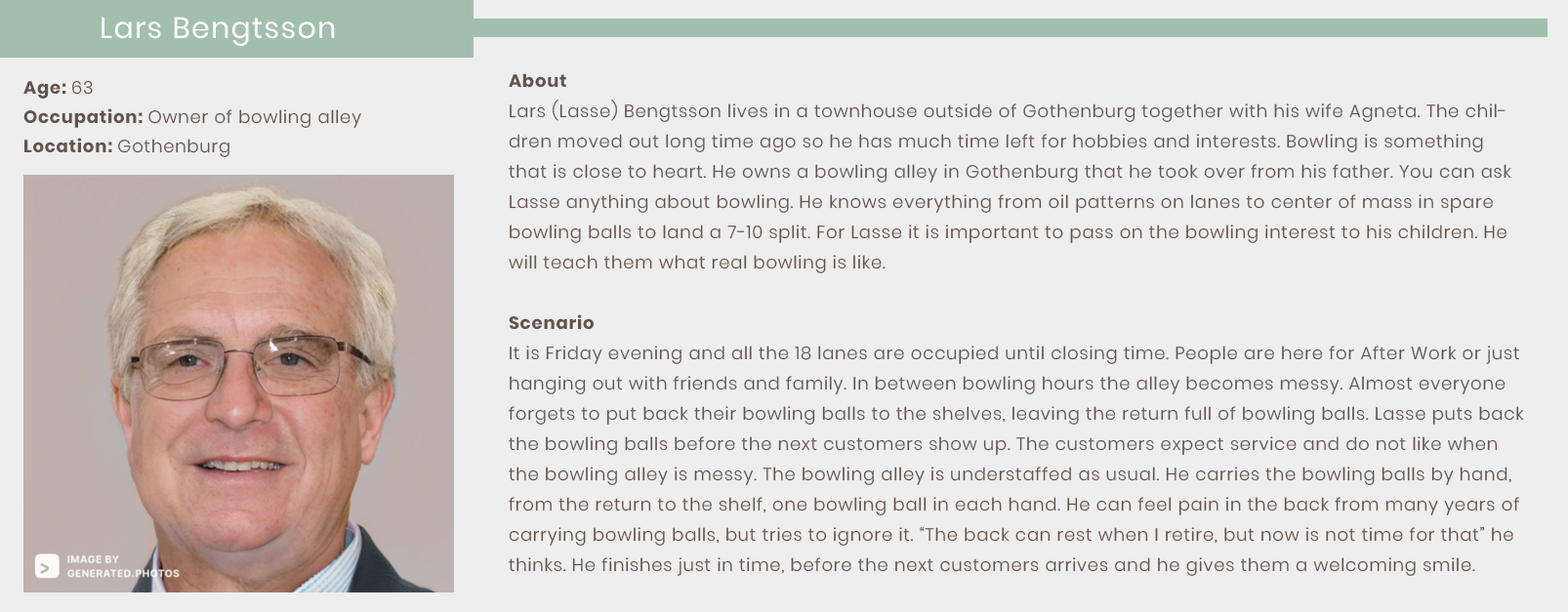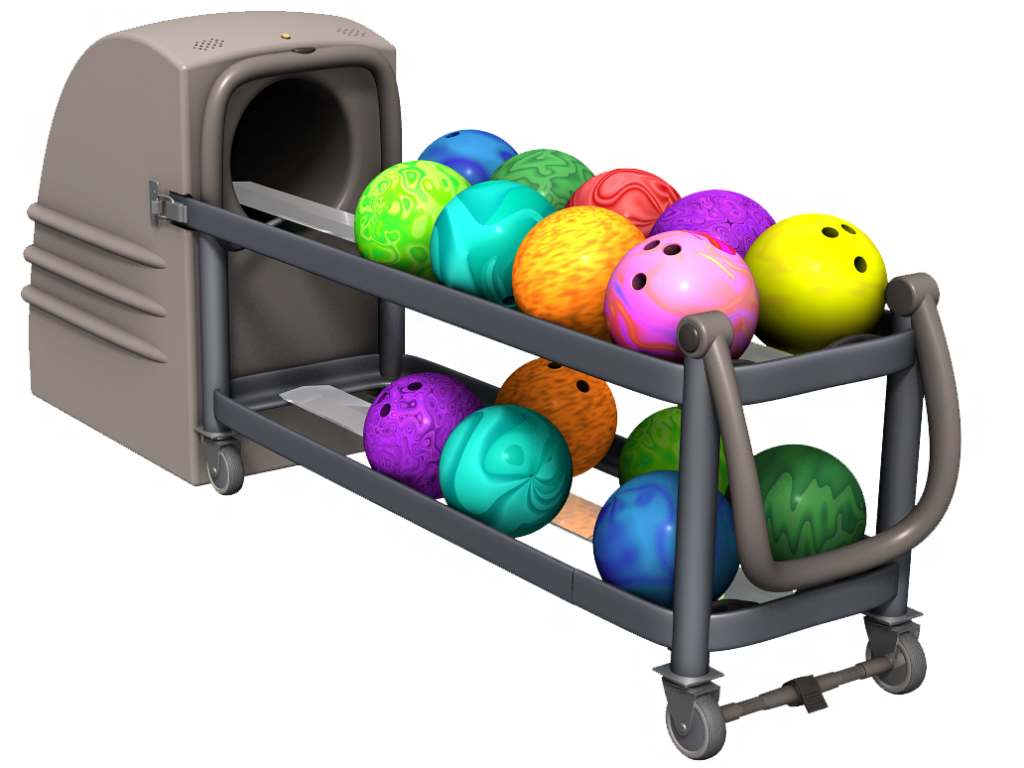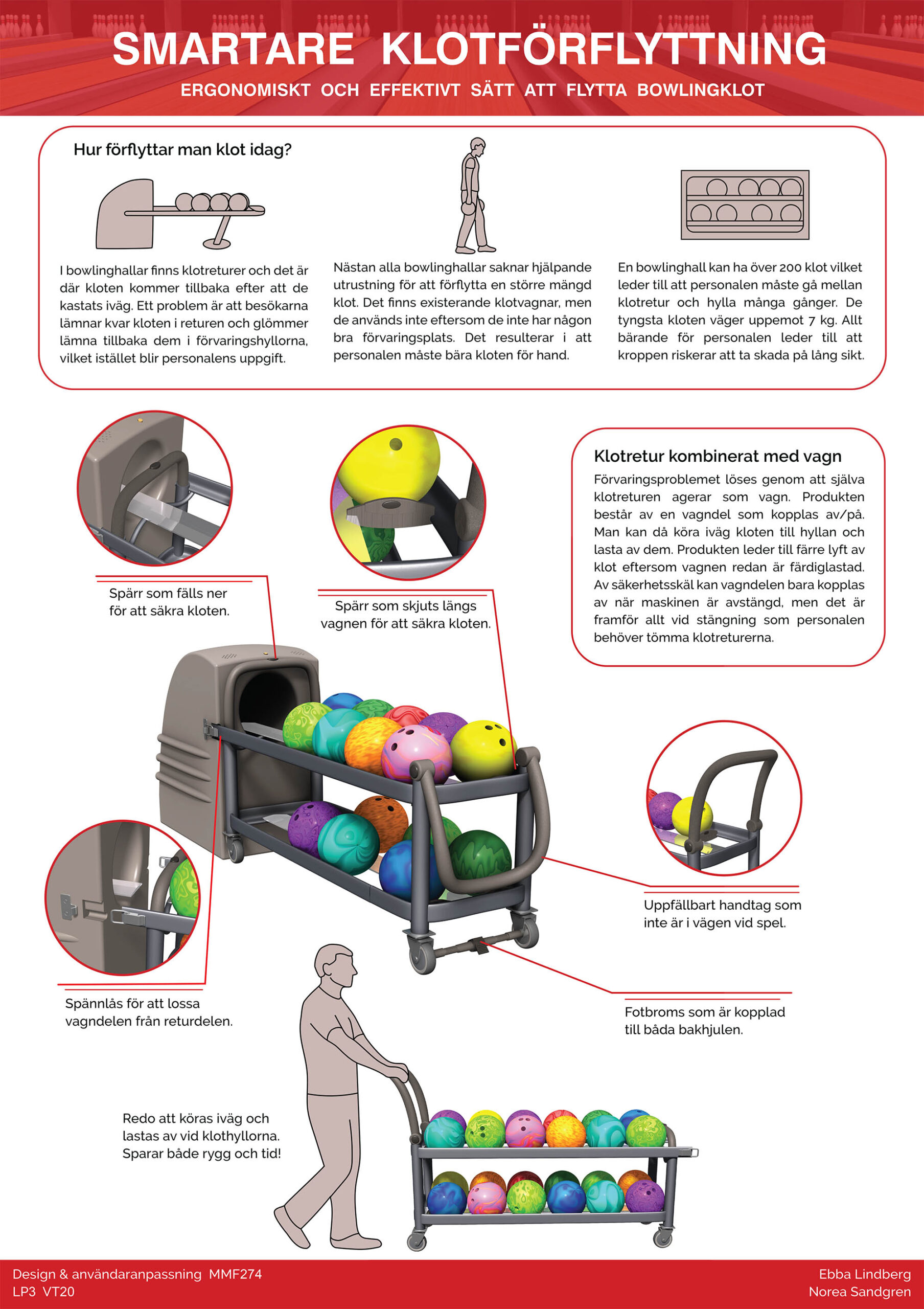After bowling, the bowling balls are often left behind at the return and needs to be put back in the shelves. The employees carry the bowling balls by hand which can be very repeating and exhausting. We designed a product where the front part can be separated and function as a wagon. The product helps the bowling alley employees with transporting many bowling balls at once. When the wagon is not used it is connected to the back part of the return, and does not take up a lot of extra space.
This project was part of a course project that spanned over two courses; Product requirements engineering and User oriented design. The Products requirements engineering course was about doing user research and finding their needs. The User oriented design course and was about designing a product based on the findings from the previous course. Before the project started, we had no idea what kind of problem, or product we would end up with.







